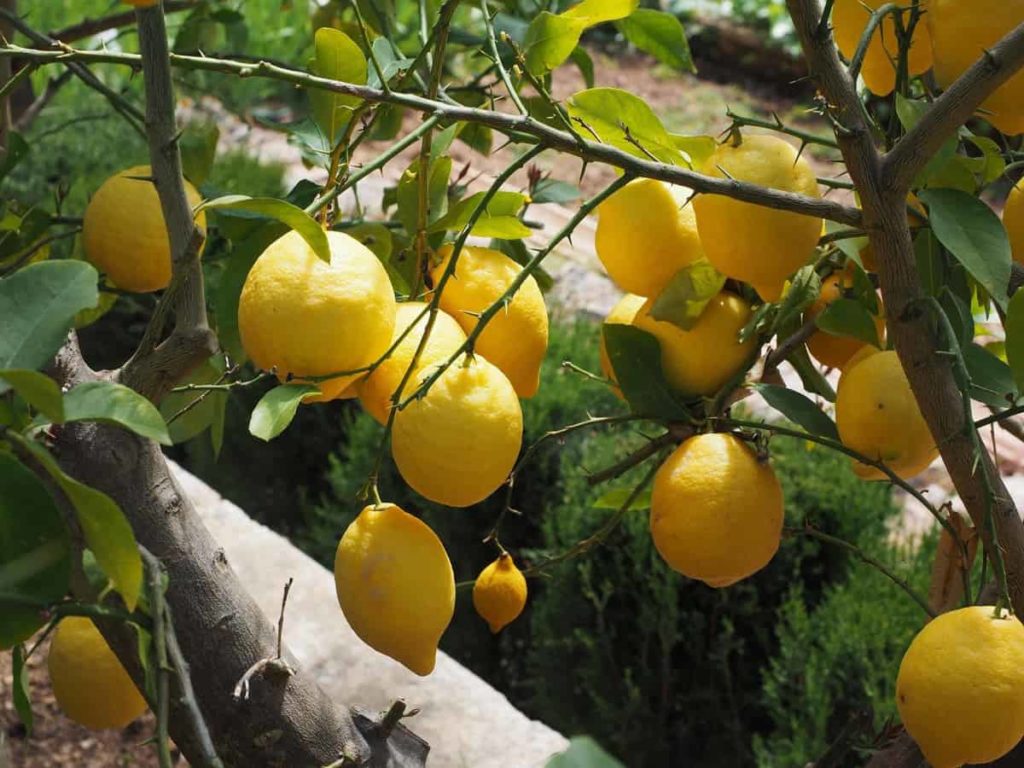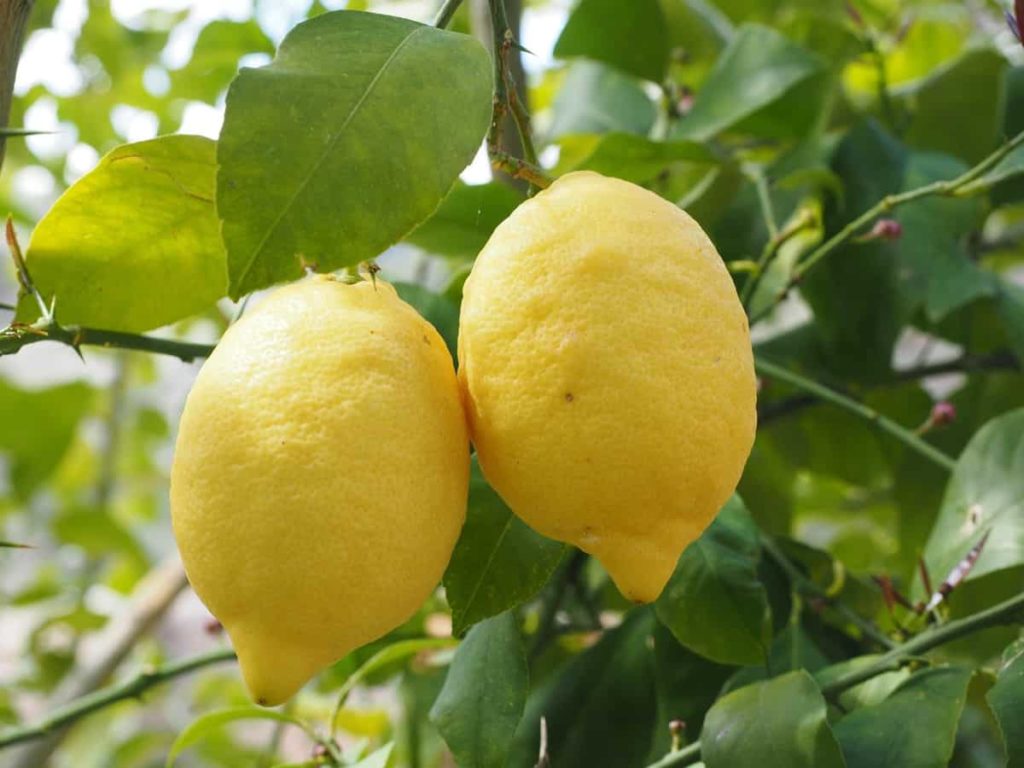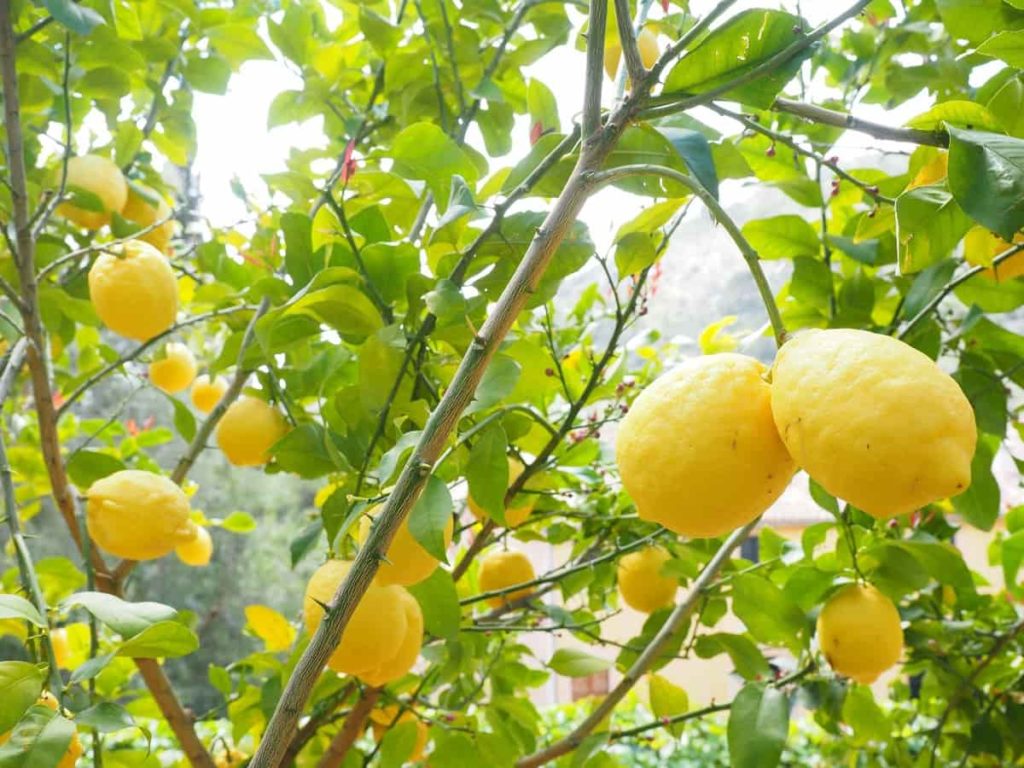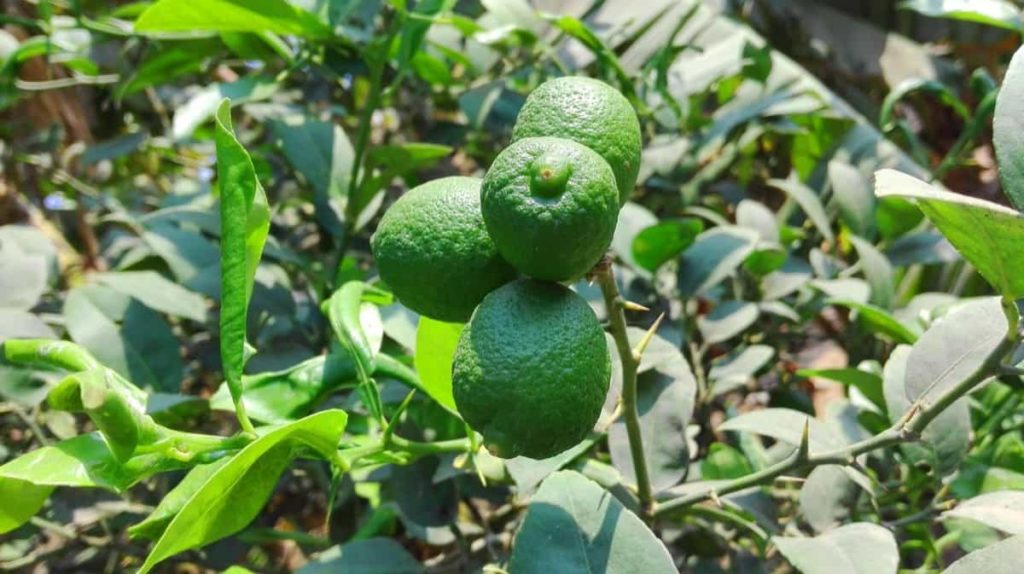Lemon trees produce beautiful leaves and fragrant flowers. Many varieties give fruit throughout the year, and many home gardeners get enough Lemons for their use. But Lemon tree diseases can kill all your efforts to maintain this beautiful plant. Lemon trees face problems if they are not properly fertilized, either under or overwatered, by the lack of sun or pest and fungi attacks.

Treatment of pest and fungi problems is essential to keep the Lemon tree growing well. Lemons suffer from a long list of insects, diseases, and problems. If you don’t catch them on time, you can’t get any fruit. Some of these problems can result from poor gardening habits; others are pests and diseases that arise when you least expect them. Let’s check out the 24 common Lemon tree problems below.
Common lemon tree problems
Lemon tree leaf drop
More water
Many times, the reason for dropping the leaves of Lemon trees is only because of more water.
Solution – To avoid this common problem, review your water schedule and read the more appropriate amount of water for Lemon trees. New Lemon trees need to be watered on alternate days for the first few weeks. After that, you should not water them more than once every week. Two-year-old Lemon trees and older ones, which are out, require water only once every two to three weeks when dry.
Pests
If the leaves that fall from your tree show signs of eating them, mold, or other strange signs, the culprits are probably pests. There are numerous pests to explore depending on your area that can affect your Lemon tree.
Solution – To remedy this problem, you will first need to identify specific pests causing your leaf drop problem. Then, choose the appropriate oil, spray, or powder-based pesticide and apply it.
Cold
A simple problem to fix, but one that many people ignore is cold temperatures. Being Lemon trees do not perform well in any temperature below -3°C.
Solution – To tackle this problem, either bring your Lemon trees in or cover them outside. Also, give your tree a couple of days or more of water before freezing temperatures.
Root rot
Root rot is another cause of the Lemon tree’s leaf drop. The soil-produced pathogen phytophthora is one of the main causes of root rot growth on Lemon trees. Similarly, more water, especially poor drainage, can cause root rot.
Solution – Keeping the base of your tree clean from debris, including weeds, grass, and low-growing plants is a great way to prevent root rot from happening. Another great remedy for root rot and leaf drops is to improve the irrigation or drainage of your tree.
In case you missed it: How to Grow a Lemon Tree at Home in the USA: From Seeds, Cuttings, Faster, In Backyard, Indoors, and Pots

Fungus
If yellow-brown spots and blisters are with your Lemon tree leaves falling, you’re dealing with one of the most common fungi species possibly affecting Lemon trees, greasy spot fungus. This fungus causes leaves to fall and makes your tree more prone to insects, colds, and other problems.
- Solution – To deal with this, spray other fungi, and copper fungicides on your trees in early summer and then at the end of summer. Make sure to cover all leaves, including undersides.
Brown leaves
Brown leaves commonly occur on potted Lemon trees due to a lack of sunburn or water. In addition, the harsh summer sun may burn new leaves. Lemon tree leaves can also burn faster if the plant is moved from shade to harsh sun.
Solution – If your tree has been in the shade, slowly move it into a sunny state to allow it to adjust to the sun’s intensity. Brown leaves on Lemon trees can also be caused by dehydration. More regularly watered potted Lemon trees than ground ones. Check the soil and water 2 to 3 times every week in summer. Shading the pot by rounding it with small vessels prevents it from drying so fast.
Curling Lemon tree leaves
Lemon tree leaves will curl to preserve moisture, so they are a sign of underwater, strong winds, and low humidity. Curling leaves can also be caused by transplant shocks or excessive water intake.
Solution – To solve this problem, you should care when watering Lemon plants. Before watering, check the soil.
Cold weather protection
Lemon trees in containers are severely damaged at temperatures below -3°C.
Solution – Cover the tree with a blanket and then a plastic sheet to provide two layers of protection when the frosty weather is threatened. Remove the cover the next day. If you grow Lemon in pots, move Lemon trees indoors for long periods of frost protection.
Lemon tree leaves wilting
The wilting leaves on your Lemon tree are a sign of more water.
Solution – It can also signify that your soil does not drain well, which causes water to sit around the roots. So, before planting the Lemon tree, check the soil drainage.
Slow growth
Many people see that Lemon trees can slow down their growth when grown in pots. Lack of nutrients, water, or poor potting soil is the cause for the slow growth.
Solution – To make the fastest growth possible, choose a large pot to give the tree a place to grow. Choose high-quality potting soil that includes slow-release fertilizer and lots of organic matter for good drainage. Place the tree in a position that regularly receives at least 6 hours of sunlight.
In case you missed it: Best Fertilizer for Lemon Trees: Homemade, Liquid, Organic, Natural, Compost Manure and NPK

Drooping flowers
Lemon trees will naturally drop extra flowers as the tree will always grow more flowers than it can keep as a fully grown fruit. In addition, lemon trees can drop flowers when they are not properly pollinated.
Solution – Place your potted Lemon tree in an open area where it can be pollinated by insects or air. Then, take a small paintbrush and transfer the pollen from one flower to another to help with pollination for indoor potted Lemon trees.
Not growing flowers or fruits
If your Lemon tree doesn’t grow flowers or fruits, it can be too young. Lemon trees start producing flowers and fruits in their third year, so you may need to wait if you have a small tree.
Solution – If you have an old tree and no flowers, add fertilizer-promoting flowers and fruits, which will give the tree more potassium and phosphorus. It promotes flowers by reducing nitrogen from the potassium to phosphorus ratio.
Fruit drop
Fruits drop from Lemon trees before maturing can be caused by dehydration or sudden temperature changes. A rapid change in temperature or stress on a tree can cause its fruit to drop.
Solution – If you see a very hot day, water the tree well the night before and protect it from the afternoon sun. It can help prevent it from drying fast and dropping fruit.
Nutrient deficiency problems
Nitrogen deficiency
It happens in old leaves and then moves towards small leaves. The leaves will turn light green, and then as the deficiency increases, the leaves will turn yellow. The nitrogen-deficient will have stopped the growth of the Lemon tree and low fruit production.
Solution – Apply nitrogen-rich manure like chicken manure to solve the problem.
Iron deficiency
Iron deficiency can be caused by high soil pH and poor drainage. As a result, the leaves will start to turn yellow with dark green veins.
Solution – You can add iron sulfate and iron chelate to increase the amount of iron in the soil. However, looking at high soil pH is the best sustainable solution to this problem. You can also add sulfur to reduce soil pH.
In case you missed it: Lemon Gardening For Beginners, How To Start, FAQs

Magnesium deficiency
Symptoms of magnesium deficiency are the yellowing of leaves between veins. It happens in old leaves when the soil’s pH is very acidic.
Solution – Use Epsom salt to treat magnesium deficiency. Dissolve four teaspoons of Epsom salt in a liter of water, then spray around the tree drip line. When applying every month, make sure you are 10 centimeters away from the stem and repeat the treatment.
Zinc deficiency
Zinc deficiency is first on young leaves that make them yellow. Next, the veins will turn yellow with spots and decrease in size in more severe cases. Finally, leaves can start to brown at the tip and die.
Solution – You can also add zinc with leaf spray or a trace element in the kelp solution spray.
Diseases
Citrus canker
Citrus canker causes wounds like yellow halo-like lesions on the branches of fruit, leaves, and citrus trees. If allowed to progress unrestrained, this Lemon tree problem will eventually result in loss of diebacks, fruit drops, and leaves. The disease is transmitted through the air with the help of air currents, birds, insects, and even humans.
Solution – Spray with liquid copper fungicides as a preventive to treating citrus canker Lemon disease. Unfortunately, if the tree has already been affected, there is no cure, and the tree will have to be destroyed.
Greasy spot fungus
A greasy spot is a fungal disease of Lemon whose symptoms include yellow-brown blisters under the leaves. As the disease progresses, blisters begin to look oily.
Solution – It is also necessary to apply liquid copper fungicides to treat this Lemon disease.
Sooty mold fungus
The sooty mold is a fungal infection resulting in black leaves. This mold results from honeydew excreted from aphids, whiteflies, and mealybugs. To eliminate the sooty mold, you must first control the pest attack.
Solution – Spray neem oil pesticide on the Lemon tree, both on the top and bottom of the leaves. You may need to repeat in 10 to 14 days, depending on the extent of the infection. Followed by treating mold growth with liquid copper fungicides.
Phytophthora fungus
Phytophthora root rot, brown rot, or collar rot is caused by Phytophthora fungus resulting in hard dark brown spots on the tree stem and is often washed away by the affected area. The fruit can also be affected by brown and rotten spots.
Solution – Remove all infected leaves and fruit drops from the ground for treatment. Next, prune the lower branches from the tree, which are more than 2 feet above the ground. Then spray with fungicides like Agri-Fos or Captan.
In case you missed it: Lemon Growing Tips, Ideas, Secrets, and Techniques

Botrytis fungus
Botrytis rot is another fungal infection that can affect Lemon trees. It develops after long rainy periods, usually along the coast, and moves from old flowers to new developing flowers in spring.
Solution – Spray fungicides on the Lemon tree as per the manufacturer’s instructions for this fungal infection.
Anthracnose
Anthracnose is also a fungal infection that causes twig dieback, leaf drops, and stained fruit. It is caused by Colletotrichum and is more common even after a long period of rain.
Solution – Spray fungicides on a Lemon tree-like Botrytis.
Lemon scab
This fungal infection doesn’t damage the fruit, and you can still eat them. Lemon scab spots look like small bumps, and as the disease spreads, it takes its scab-like appearance. Like other fungal infections, wet and humid conditions are perfect for the disease to thrive and catch.
Solution – Maintain good garden hygiene and correct watering methods. Many people recommend killing the affected tree as an alternative to harmful fungicides that can damage other plants in your garden.
Pests
Aphids
Aphids are common pests that can attack Lemon trees. Aphids are small, green pests that suck the juice from stems and leaves.
Solution – The number of aphids can increase rapidly, so squirt them from your hose or treat them with neem oil.
Citrus-leaf miners
These little pests get their unique name as they tunnel across citrus leaves, leaving silvery trails on the leaves of your Lemon tree. Eventually, these leaves are distorted, and the growth of younger leaves may be affected.
Solution – The best way to deal with citrus leaf miners is to introduce beneficial insects. The Parasitic wasps and spiders eliminate the majority of larvae and pupae in a few days.
Scales
The scale pests will sit where the leaf joins the stem and suck the juice from the Lemon tree. This will lead to new development and damage to the connected leaves. Then, the scale will form a hard coating on their body and attack themselves firmly on the stem.
In case you missed it: Growing Lemon Balm At Home – A Planting Guide

Solution – To remove them before attacking, remove them from your hose or wash the stems with soapy water. Next, apply neem oil in pests and affected leaf areas. If the insects are still present, repeat it in 1 to 2 weeks. Several applications may be required to treat this problem.
Bronze orange bugs
Bronze orange bugs (or stinking insects) are sapsuckers that will attack new growth on your Lemon tree. They can reproduce quickly in spring and summer and damage the tree quickly.
Solution – To remove these pests, stir them in a bucket of soapy water or treat them with pest oil.
- Growing Gold: Essential Techniques for Planting Pineapples
- How to Make Kalanchoe Plant Bushy: Home Remedies and Solutions
- 11 Reasons Why Your Gardenia is Not Blooming: Home Remedies and Solutions
- Eco Elegance: The Guide to Designing a Drought-Tolerant Landscape
- Gardening on a Slope: Strategies for Hillside Landscaping
- Nourish and Flourish: Top Organic Mulches for Thriving House Plants
- Everything You Want to Know about Indian Mogra Flower: Discover Uses and Growing
- Green Thumb Success: Expert Tips for Cultivating Greenhouse Pumpkins All Year Round
- Maximize Growth & Flavor: The Ultimate Guide to Companion Planting in Herb Gardens
- How to Control Rhododendron Problems Naturally: Home Remedies and Organic Ways to Fix Them
- Natural Magic: The Remarkable Benefits of Cinnamon for Plants
- Best Steps to Revive Dying Tulip with Natural and Organic Treatment
- 10 Reasons Why Your Angel Trumpet is Not Blooming: Remedies and Treatment
- How to Fix Periwinkle Leaf and Flower-Related Problems: Natural Remedies and Solutions
- How to Fix Zinnias Leaf and Flower Problems: Discover Natural and Home Remedies
- Organic Steps to Induce Lemon Tree Flowers: A Comprehensive Guide
- Bloom Booster: Crafting the Perfect Homemade Bougainvillea Fertilizer
- Optimizing Growth: A Guide to Applying NPK Fertilizer for Potted Plants
- 10 Best Homemade Fertilizers for Rubber Plant: DIY Recipes and Application Method
- How to Boost Female Pumpkin Flowers: Effective Steps for More Flowers and High Yields
- Transform Your Indoor Garden: Top Benefits of Pink Salt for Houseplants
- 10 Best Homemade Fertilizers for Peacock Plants (Calathea): Easy DIY Guide
- Unlock Blooms: 9 Reasons Why Your Potted Chrysanthemum is Not Blooming
- 8 Reasons Why Your Potted Hibiscus is Not Blooming: Fix it with Simple Solutions
- Unlock Blooms: 9 Key Reasons Your Potted Frangipani Won’t Flower
- 10 Reasons Why Is My Ice Plant Not Blooming: Remedies and Treatment
- 10 Reasons Why My Potted Hydrangea Not Blooming: Treatment and Remedies
- 10 Reasons Why is My Wisteria Not Blooming: Remedies and Treatment
- 10 Reasons Why is My Goldfish Plant Not Blooming: Remedies and Treatment
- Maximize Your Space: Ultimate Guide to Balcony Gardening with Grow Bags
- 10 Reasons Why Your Iris is Not Blooming: Remedies and Treatment
- 10 Reasons Why Your Anthurium Plant is Not Blooming: Treatment and Remedies
- 10 Reasons Why Your Aquaponic Plants Are Not Flowering: Remedies and Treatment
- 10 Reasons Why Your Agapanthus is Not Flowering: Remedies and Treatment
- Ultimate Guide to Brown Turkey Fig: Steps to Growing Brown Turkey Figs
- How to Grow Acai Berry: Propagation, Planting, and Care